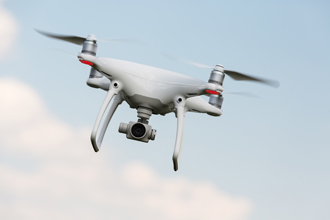Oklahoma Drone Pilot Training and Part 107 Test Info
Find drone training Oklahoma plus all the information that you need to get your Remote Pilot Certificate aka Drone License and fly drones commercially. The future is bright for the Unmanned Aircraft System industry as the demand for commercial drone pilots increases.
 On June 21, 2016, the FAA released its long awaited Part 107 to Title 14 of the Code of Federal Regulations (14CFR). These rules allow small unmanned aircraft systems (UAS) which are under 55 lbs to be flown commercially in the National Airspace System. On August 29, 2016 the new Part 107 rules became effective and you are now required to get a Remote Pilot Certificate with a small UAS Rating in order to legally fly drones for commercial or business purposes. To get this certificate, you must PASS the FAA Part 107 Remote Pilot aeronautical knowledge test.
On June 21, 2016, the FAA released its long awaited Part 107 to Title 14 of the Code of Federal Regulations (14CFR). These rules allow small unmanned aircraft systems (UAS) which are under 55 lbs to be flown commercially in the National Airspace System. On August 29, 2016 the new Part 107 rules became effective and you are now required to get a Remote Pilot Certificate with a small UAS Rating in order to legally fly drones for commercial or business purposes. To get this certificate, you must PASS the FAA Part 107 Remote Pilot aeronautical knowledge test.
Click here to find an FAA Part 107 test center location.
Please note: If you already have a Part 61 pilot certificate, you may only be required to take the online training course Part 107 small Unmanned Aircraft Systems (sUAS)ALC-451. All others can use this online course as a practice test.
To apply for your Remote Pilot Certificate aka drone license after passing the Part 107 knowledge test, click through to How Do I Become A Drone Pilot for your next steps.
Part 107 Knowledge Test Study Guide
The Federal Aviation Administration (FAA) has published a free Study Guide to help prepare you to take the Remote Pilot Certificate with an sUAS Rating Airman Knowledge Test. To download your free copy, click here.
Drone Training in Oklahoma:
Oklahoma State University
Stillwater, Oklahoma
Unmanned Aircraft Pilot (UAP), Minor
Oklahoma State University offers a minor in Unmanned Aircraft Systems (UAS) to undergraduate students. Students will receive hands-on analysis, design, construction and flight testing of UAS platforms.
The University along with three partner universities was awarded $6 million by the National Science Foundation to develop weather research UAVs. Through the study of atmospheric physics they plan to develop an unmanned aircraft system (UAS) to improve weather forecasting.
Spartan College of Aeronautics and Technology
Tulsa, Oklahoma
13 month diploma or 16 month Associate Degree in Aviation Electronics Technology (AET)
The demand for certified technicians with training in the manufacturing, operation and maintenance of unmanned aerial vehicles (UAV) is expected to increase as the technology advances.
Graduates of the Aviation Electronics Technology program are qualified to work in many industries such as Aerospace, Communications, Simulator Development, Robotics and UAV.
Both will prepare you for the National Center for Aerospace and Transportation Technology (NCATT) certification.
Tulsa Community College
TCC Aviation Center (Riverside Campus)
Tulsa, OK
UAS Drone Program (Part 107 prep class)
Given through the Continuing Education and Workforce Development department of TCC, this course provides an understanding of Part 107 rules and regulations.
Students will be prepared to sit for the FAA Part 107 exam after completing this course.
The testing fee is not included with the registration fee for the class.
Looking for drone pilot training in a different state? Check out the map on our drone pilot schools page.
There are many possibilities for UAV jobs as a drone pilot in Oklahoma. Farmers are especially interested in using drones for precision agriculture. This involves flying a drone over fields of crops to send back information about areas that need more water, fertilizer or to monitor insect or pest problems, etc. The data is received from the drone and sent via email to the farmers.
There are many other industries in Oklahoma looking forward to implementing Unmanned Aircraft Systems such as surveying, power line inspections, wildlife management, search & rescue and law enforcement.
Also, oil and gas refineries are utilizing drones to carry out inspections on areas of the refineries that are difficult to access.
Part 107 Highlights:
- You must be at least 16 years old.
- You must hold a Remote Pilot Certificate with a Small UAS Rating or be supervised directly by someone who does have this certificate.
- The drone must not weigh more than 55 lbs including any attached cargo.
- The UAS is not allowed to fly higher than 400 feet above the ground.
- The maximum speed allowed for the drone is 100 mph.
- The UAS needs to always be within the pilot’s line of sight without binoculars.Operation of the UAS is limited to daylight hours and during twilight hours only if the drone has anti-collision lights.
- You are not allowed to fly the drone over people who are not directly involved in the UAS operation.
- If the FAA requests your drone for inspection or testing, it must be made available with all records that are required under the new rule.
- Any UAS operation that causes a serious injury, loss of consciousness or property damage (not to the UAS) of at least $500 must be reported within 10 days to the FAA.
You can read the Summary of Part 107.
Read the complete Small UAS Rule here.
Drone Pilot Training Center is dedicated to providing the information that you need to become a successful drone pilot. Check back for updates at https://www.dronepilottrainingcenter.com for drone pilot license info.
Related Pages:
